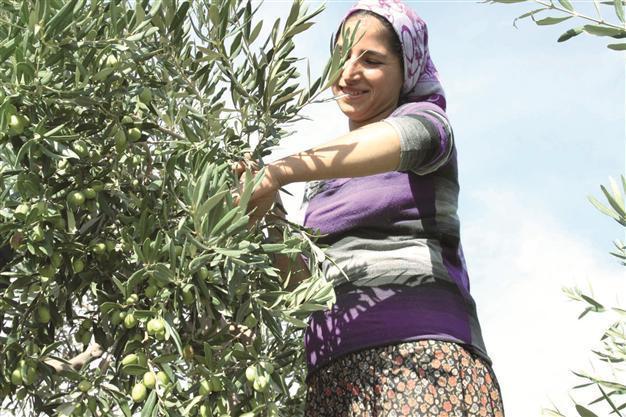Periodicity no longer plagues olive sector
ANKARA - Anatolia News Agency

A woman harvests olives in the Aegean region of Turkey. Better technology and farmer training have increased the olive harvest, combatting periodicity. DHA photo
The Turkish olive sector is overcoming the periodicity problem, which refers to no high harvest for two years in a row, due to technical improvements in farming, said Turkish Union of Agricultural Chambers (TZOB) Chairman Şemsi Bayraktar in a written statement.
According to Bayraktar, there has been a significant increase in olive production and the number of olive trees since 2004. In the 2005-2011 period there was a 3.7 percent increase in the number of olive trees compared to the 1998-2004 period. This translated to a 16 percent increase in olive production between 2005 and 2011.
Referring to periodicity, he also stressed that there were very significant increases in olive production during the no harvest years.
“In the 2005-2011 no-harvest periods, there was a 74 percent increase compared to the current harvest periods between 1998 and 2004 and a 15 percent increase in the number of olive trees. These percentages show us that there is a production efficiency increase during the no-harvest periods. This increase therefore indicates that periodicity is falling.”
Bayraktar attributes that fall in periodicity to the care of olive trees and new technology. In particular he notes the increase in seed production, watering capabilities to address dry periods, pruning of the trees, a delay in harvesting the olives and other such techniques which have made olive harvesting more efficient.
Farmers have been able to achieve these results due to the training they have received as well as access to new technology and Bayraktar believes that this trend will continue in the coming period. Farmers will be able to produce more olives and expand their overseas markets.
